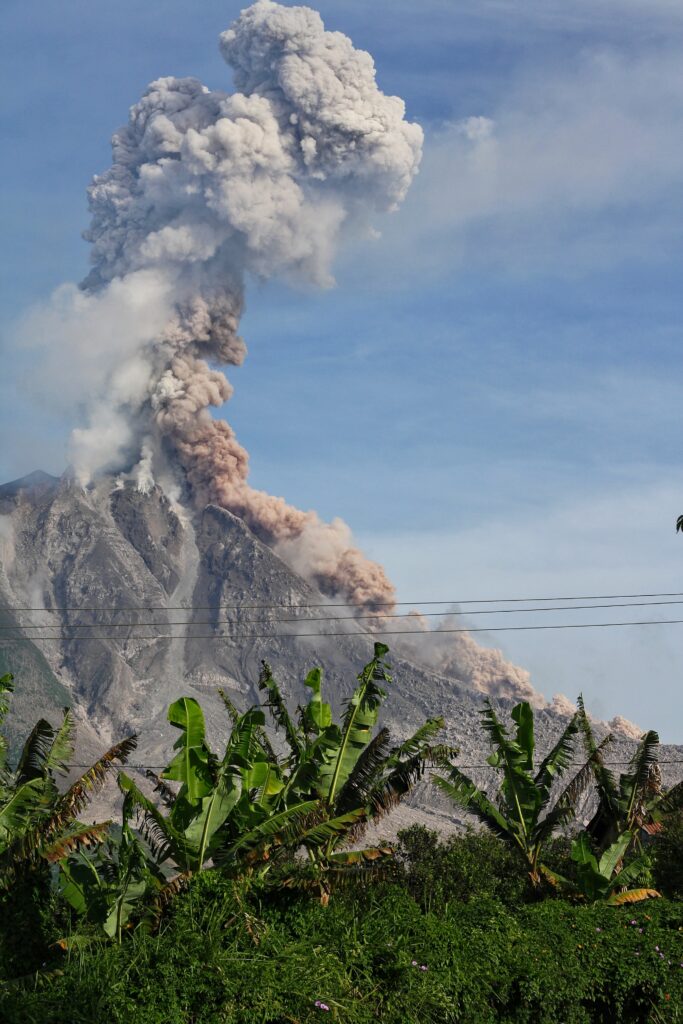
On a serene Sunday afternoon, nature’s grandeur and raw power took center stage as the Kilauea volcano on Hawaii’s Big Island roared to life once more. The United States Geological Survey (USGS) reported that this captivating eruption, which began recently, has, for the time being, confined itself to the crater floor surrounding the volcano.
Astonishing webcam images have captured the mesmerizing sight of fissures forming at the base of Kilauea’s crater, spewing molten lava that gracefully courses across the surface of the crater floor. This breathtaking display of Earth’s might and beauty serves as a stark reminder of the ever-present forces that shape our planet.
Despite the awe-inspiring spectacle, the Hawaii Emergency Management Agency reassured residents and visitors that this eruption does not pose an immediate threat in the form of lava flowing into nearby communities. However, the release of volcanic particles and gases into the atmosphere may pose breathing difficulties for those exposed to these natural emissions.
The eruption’s onset was heralded by a period of significant seismic activity and the rapid elevation of the volcano’s summit. As a response, the USGS heightened Kilauea’s aviation color code from orange to red, signifying the potential dangers posed by the eruption. Additionally, the volcano alert status was upgraded from watch to warning. Nestled within the boundaries of the Hawaii Volcanoes National Park, Kilauea is renowned as one of the world’s most active and captivating volcanoes.
This article delves into the mesmerizing eruption of the Kilauea volcano, its geological significance, and the implications for local communities and the environment. As we explore the details of this awe-inspiring natural event, we’ll also reflect on the volcano’s storied history, including its devastating eruptions in recent years.
A Majestic Reawakening: Kilauea’s Eruption Unfolds
The sight of a volcanic eruption is both breathtaking and humbling. On that fateful Sunday afternoon, the world watched as Kilauea volcano, located on Hawaii’s Big Island, began a new chapter in its geological story. The United States Geological Survey (USGS), tasked with monitoring and studying geological phenomena, promptly reported the eruption and provided vital information to ensure public safety.
Webcam images transmitted live from the scene showcased the incredible spectacle. Fissures, openings in the Earth’s crust, emerged at the base of the volcano’s crater, serving as conduits for the molten lava within. As the lava welled up, it gracefully flowed across the surface of the crater floor, resembling a river of liquid fire, painting a vivid portrait of the Earth’s inner workings.
The eruption, as visually captivating as it was, raised concerns about potential threats to communities living in the vicinity of Kilauea. To address these concerns, the Hawaii Emergency Management Agency, through X (formerly known as Twitter), provided critical information. They clarified that while the eruption posed no immediate risk of lava inundating nearby communities, it did release volcanic particles and gases into the atmosphere. These emissions have the potential to cause respiratory issues for individuals exposed to them, especially those with preexisting health conditions.
Nature’s Dramatic Prelude: Seismic Activity and Summit Uplift
Nature rarely unfolds its spectacles without a prelude, and the eruption of Kilauea was no exception. Prior to the eruption, there was a notable increase in seismic activity—a telltale sign of the Earth’s restlessness. The ground trembled with a series of strong seismic events, underscoring the geological forces at play beneath the surface.
Simultaneously, Kilauea’s summit experienced rapid uplift, a phenomenon where the Earth’s crust swells and rises due to the accumulation of magma beneath it. This rapid uplift acted as an ominous harbinger of the volcanic eruption that would soon follow.
As a result of these ominous developments, the United States Geological Survey (USGS) took swift action. They elevated the aviation color code for Kilauea from orange to red, signaling the heightened risk posed by the volcanic activity. Additionally, the volcano alert status was upgraded from watch to warning, emphasizing the need for vigilance and preparedness in the affected areas.
A Geological Marvel: Kilauea’s Unique Status
Kilauea, situated in a restricted area within the Hawaii Volcanoes National Park, stands out as one of the world’s most remarkable and consistently active volcanoes. Its geological significance and continuous activity have made it a subject of fascination and study for scientists and a source of wonder for visitors from around the globe.
This mesmerizing volcano, with its expansive crater and unique features, offers insights into the Earth’s inner workings. Its frequent eruptions provide scientists with invaluable data for understanding volcanic processes and volcanic hazards, ultimately contributing to improved volcanic risk assessment and preparedness.
However, Kilauea is not merely a scientific curiosity; it has a profound impact on the local communities and environment. Its eruptions, though awe-inspiring, can also be destructive, as witnessed in recent years.
A Glimpse into History: Kilauea’s Recent Eruptions
The recent history of Kilauea is marked by dramatic eruptions that have left indelible marks on the landscape and the lives of those in their path. In 2019, a series of earthquakes and a major eruption at Kilauea resulted in the destruction of hundreds of homes and businesses, leaving local communities grappling with the aftermath.
The eruptions of Kilauea in 2019 were characterized by dramatic lava flows, fissures opening up across the landscape, and the collapse of the Halema’uma’u crater. These events underscored the unpredictable and transformative nature of volcanic activity and the need for vigilance and preparedness in areas vulnerable to eruptions.
In the wake of these eruptions, scientists and local authorities have worked tirelessly to monitor Kilauea’s activity and enhance early warning systems, aiming to safeguard both residents and visitors to Hawaii’s Big Island.
The Ongoing Story: Kilauea’s 2023 Eruption
The recent eruption of Kilauea in 2023 continues the volcano’s story, reminding us of the ever-present geological forces shaping our world. While the eruption’s confined location within the crater minimizes immediate threats to nearby communities, it serves as a captivating reminder of the Earth’s ceaseless transformation.
As the United States Geological Survey (USGS) closely monitors this event and raises the volcano’s alert level, the world watches with a mix of wonder and respect for the power of nature. For scientists, it offers an opportunity to deepen our understanding of volcanic processes and hazards. For local communities and authorities, it reinforces the importance of preparedness and resilience in the face of geological uncertainty.
The Resilience of Hawaii’s Communities
Hawaii’s communities have demonstrated remarkable resilience in the face of recurring volcanic activity. The eruptions of Kilauea in recent years have tested the resolve of residents and authorities alike. Evacuations, property loss, and disruption to daily life have been enduring challenges, yet the people of Hawaii have shown a remarkable capacity to adapt and rebuild.
These eruptions have also prompted a collaborative effort between scientists, local authorities, and communities to enhance monitoring, early warning systems, and emergency response preparedness. The lessons learned from past eruptions are invaluable in ensuring the safety and well-being of those living on Hawaii’s Big Island.
A Natural Wonder and a Geological Marvel
Kilauea’s eruption in 2023 is a powerful reminder of the awe-inspiring beauty and raw power of nature. It offers scientists a unique opportunity to study volcanic processes up close and to advance our understanding of volcanic hazards. For local communities and the world, it serves as a testament to the resilience and adaptability of those living in the shadow of one of Earth’s most captivating volcanoes.
As Kilauea’s story continues to unfold, it reinforces the need for vigilance, preparedness, and the harmonious coexistence of humans and nature. The eruptions of Kilauea are a living testament to the dynamic and ever-changing nature of our planet, a source of wonder and inspiration for generations to come.
In conclusion, the recent eruption of the Kilauea volcano on Hawaii’s Big Island is a captivating natural spectacle that captures the essence of Earth’s geological processes. While it poses no immediate threat to nearby communities, it serves as a reminder of the need for preparedness and vigilance in volcanic regions. Kilauea’s ongoing story highlights the resilience of Hawaii’s communities and the scientific importance of studying one of the world’s most active and fascinating volcanoes.
